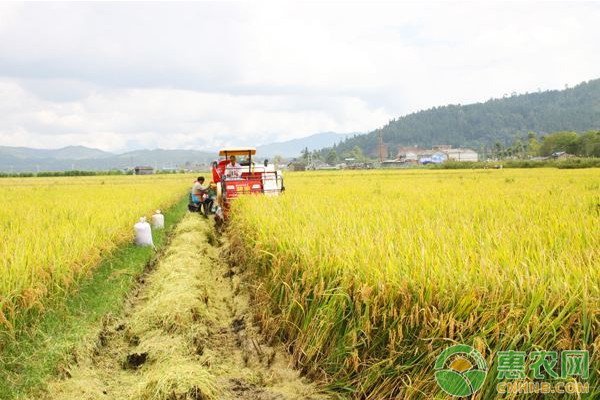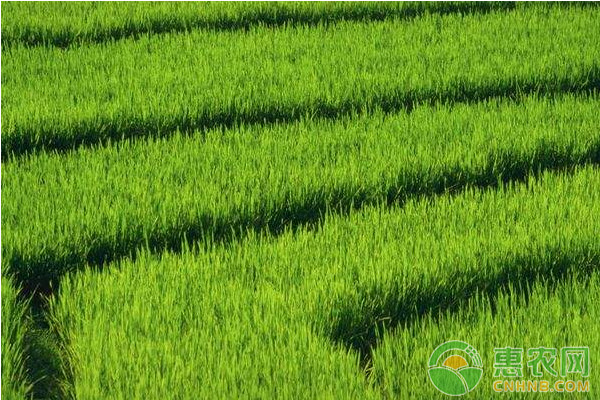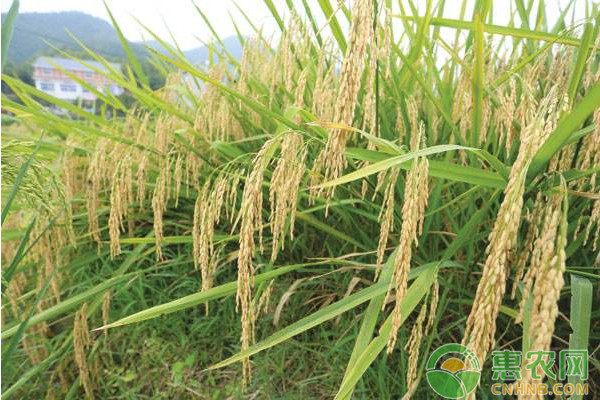Rice is one of the most important food crops in the world. Rice is currently grown in the southern and northern parts of China, and agricultural research experts and rice growers are constantly researching and developing new high-quality rice cultivation techniques. Let's take a look at the high-quality rice cultivation techniques and integrated pest management.

1 High-yield rice high-yield cultivation techniques
1.1 The ecological environment required for high-quality rice cultivation
It is necessary to carry out all-round monitoring of high-quality rice planting areas to meet the corresponding indicators as a reference. Only the indicators that meet the high-quality rice planting indicators can be used as planting bases. After selecting the planting bases, it is necessary to implement timing and fixed points for the planting bases. All aspects of monitoring, gradually optimize the various ecological environments of the planting area, provide a good growth and development environment for high quality rice growth.
1.2 Selection of resistant rice varieties and seed treatment
The quality of rice varieties has a great influence on the growth of the later stage. Therefore, it is necessary to strictly select high-quality rice varieties, select high-yield, stable-yield, high-quality, disease-resistant rice varieties, and also consider cold tolerance and germination in the process of selecting high-quality varieties. The characteristics of high-speed rice plant stems should be very thick and strong, and it is not easy to fall. According to the actual natural environment of the planting area, suitable growth and development varieties should be selected according to the characteristics of speed, strength, and disease resistance. Only by ensuring the excellent quality of the variety itself can we study which high-yield cultivation technology model is selected. At present, most of them use mechanical planting, which also has high requirements for rice seeds, not only to adapt to the local planting environment, but also To analyze the maturity of the variety, to ensure that rice can produce high yield, stable yield and high quality. Before sowing the selected high-quality varieties, we should also use the drought-resistant type of dry nurse to carry out seed coating, and put the selected good rice varieties directly into the water for 8~12h, without germination treatment, as long as the seeds are absorbed enough. After the nutrients are stirred, the seeds are removed and packaged for cleaning. According to the actual weight of the seed, select the appropriate seed coating agent and put it into the bottle. Put the soaked planting side into the bottle and stir it until it is evenly mixed. Generally, soak for 20 hours, then keep warm and germination, and control the temperature and humidity. Otherwise it is not good for late growth and development.
1.3 High-quality rice high-yield cultivation seeding technology
With the gradual improvement of China's agricultural mechanization level, the current high-quality rice planting in China has basically adopted the mechanical planting mode. Under this development mode, the first priority is to do the early seedling and planting work. In order to ensure the normal operation of rice mechanization, it is necessary to level the land and not use a higher topography, so that the rice seedlings can be directly sown into the field by the planter to ensure the growth of the rice seedlings. During the sowing process, the soaked seeds should be taken out for cleaning. The seed buds required for mechanized planting mode should just be outcropped. If artificially planted, the seed germination length should not be greater than half of the seeds. Regardless of the type of seeding used, the appropriate seeding density must be chosen. The planting density should be reasonable and the sowing depth should be appropriate. It should not be too deep or too shallow.

1.4 Choose the right time to transplant, ensure reasonable close planting
Hybrid rice seedlings should be transplanted reasonably after 30 days of sowing. The normal rice transplanting time should not exceed 60 days after sowing for 40 days. The best transplanting time of rice every year is in mid-April, effectively utilizing the timing of the rainy season, under the illumination of high temperature, it can promote the early germination of seeds, timely branching, and the development of more rice ears, which can effectively avoid 7 Low temperature damage caused by excessive rainy weather in the second half of the month. In terms of transplanting specifications, a standardized drawing line should be selected, so as to ensure better ventilation and light transmission, and promote the healthy growth of rice stems and enhance the ability to resist pests and diseases. At the same time, in the first ten days of April, rice throwing should be carried out. Before that, the land should be leveled to keep the shallow water on the ground. If there is no wind or small wind, it should be divided into two or three times to finish it. To ensure uniform seedling transplanting. To ensure the stability of the seedlings before they can be watered.
1.5 Scientific fertilization and reasonable watering during growth and growth period
Before the rice seedlings are planted in the field, 1500kg of farmyard manure, 25kg of calcium fertilizer and 15kg of potassium sulphate should be applied to the planting area for 667m as the base fertilizer. Within 7 days after transplanting the seedlings, it is necessary to apply a single-time top dressing, applying 20kg of ammonium bicarbonate or urea per 667m. If the planted area is sandy loam with less organic matter and easy to leak, according to the actual growth and development of the seedlings. It should be supplemented with suitable topdressing, especially in the rice filling period. It is necessary to add 1kg of 667m urea to 50kg of potassium dihydrogen phosphate to 50kg as a solution, and spray on the leaves, which can effectively prevent premature aging of rice. When watering, the principle of shallow water planting, deep water seedling protection, thin water sputum, deep water sputum, dry and wet seed should be adhered to.

2 Comprehensive control measures for high quality rice pests and diseases
2.1 Integrated prevention and control of rice diseases
The application of more nitrogen fertilizer during the growth of rice, or the disease caused by excessive or insufficient watering is plague, and in severe cases, rice production will be reduced. Therefore, it is necessary to formulate reasonable prevention and control measures, select excellent disease-resistant varieties and appropriate high-yield cultivation techniques, and combine drugs for comprehensive prevention and treatment. For example, rice varieties with outstanding disease resistance can be selected and soaked with 25% tricyclazole wettable powder during seed treatment. In the rice fields, organic fertilizers such as potassium fertilizer, phosphate fertilizer and nitrogen fertilizer are applied, and a certain dose of medicine is used for chemical control in the early stage of the disease.
2.2 Integrated pest control of rice pests
Rice pests are mainly aphids and planthoppers. For the control of aphids, 20% thunderstone emulsifiable oil 1400m L·hm or 14% duel emulsifiable concentrate 800mL·hm or 13% Golden Buddha emulsifiable oil 650mL·hm can be used. For the control of planthoppers, 30% eucalyptus emulsifiable concentrate or 23 g of chlorpyrifos WP can be used.
The above is the whole content of high-quality rice cultivation technology and integrated pest control. I hope this content can help the majority of grain growers!
COVID 19 Products,Faceshield Face Shield,Plastic Face Shield,Medical Face Shield
NINGBO YINGMED MEDICAL INSTRUMENTS CO.,LTD , https://www.chinayingmed.com